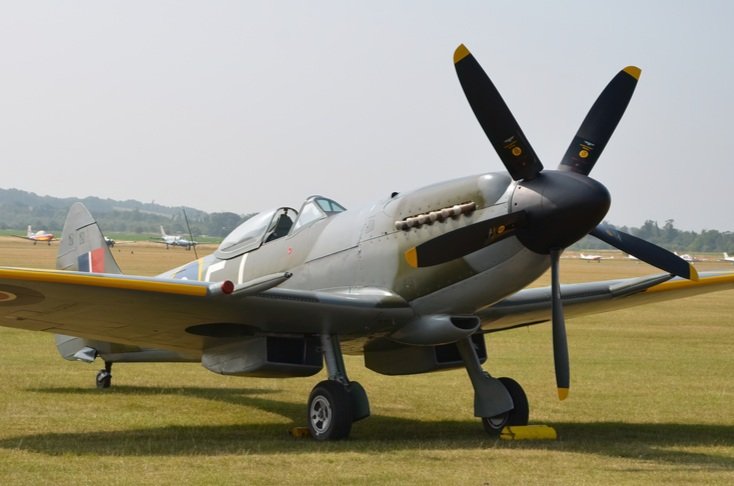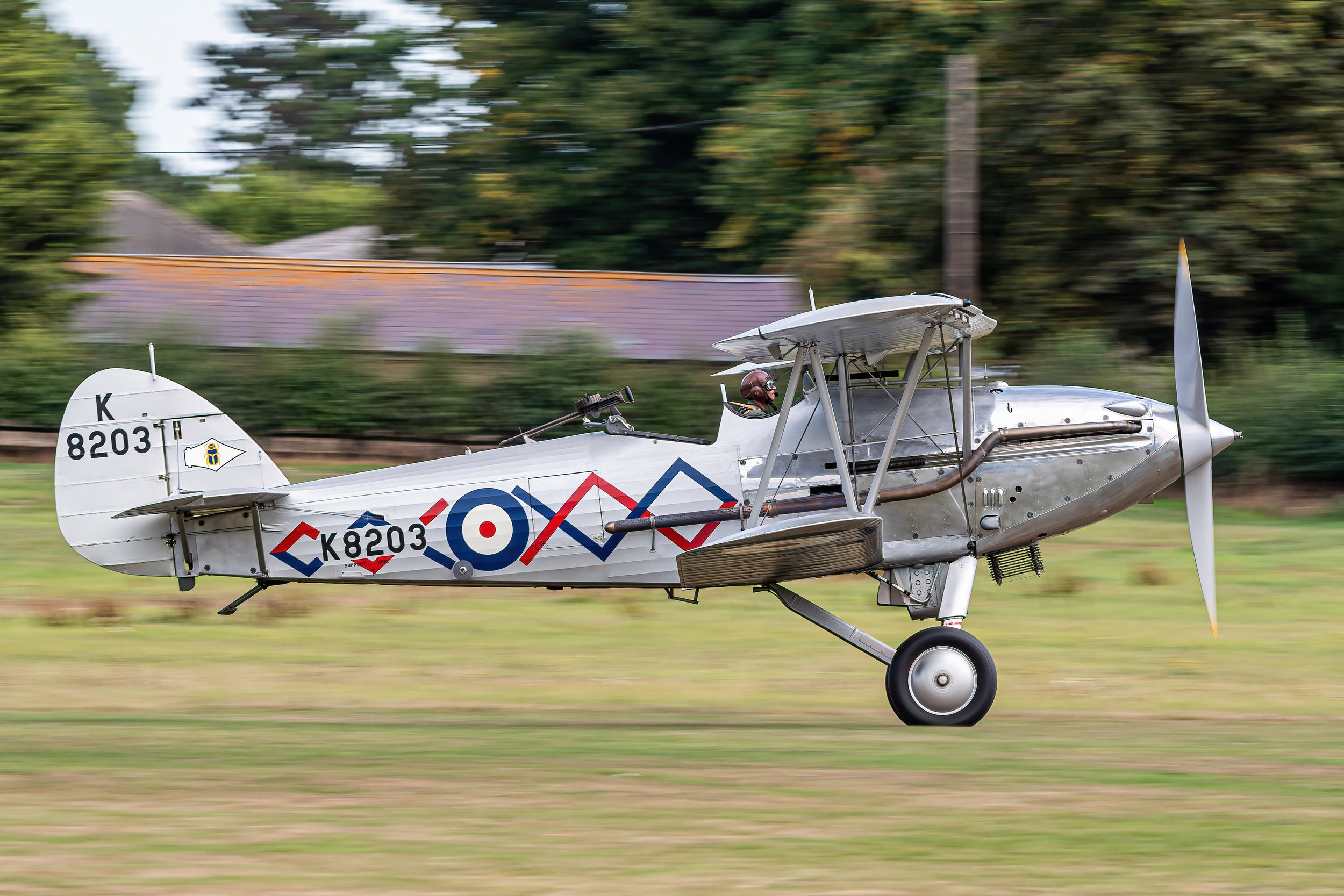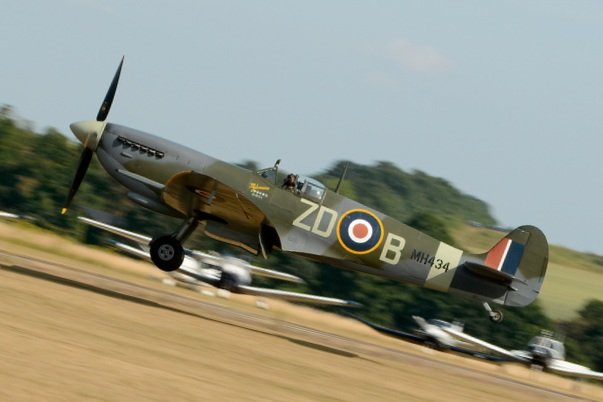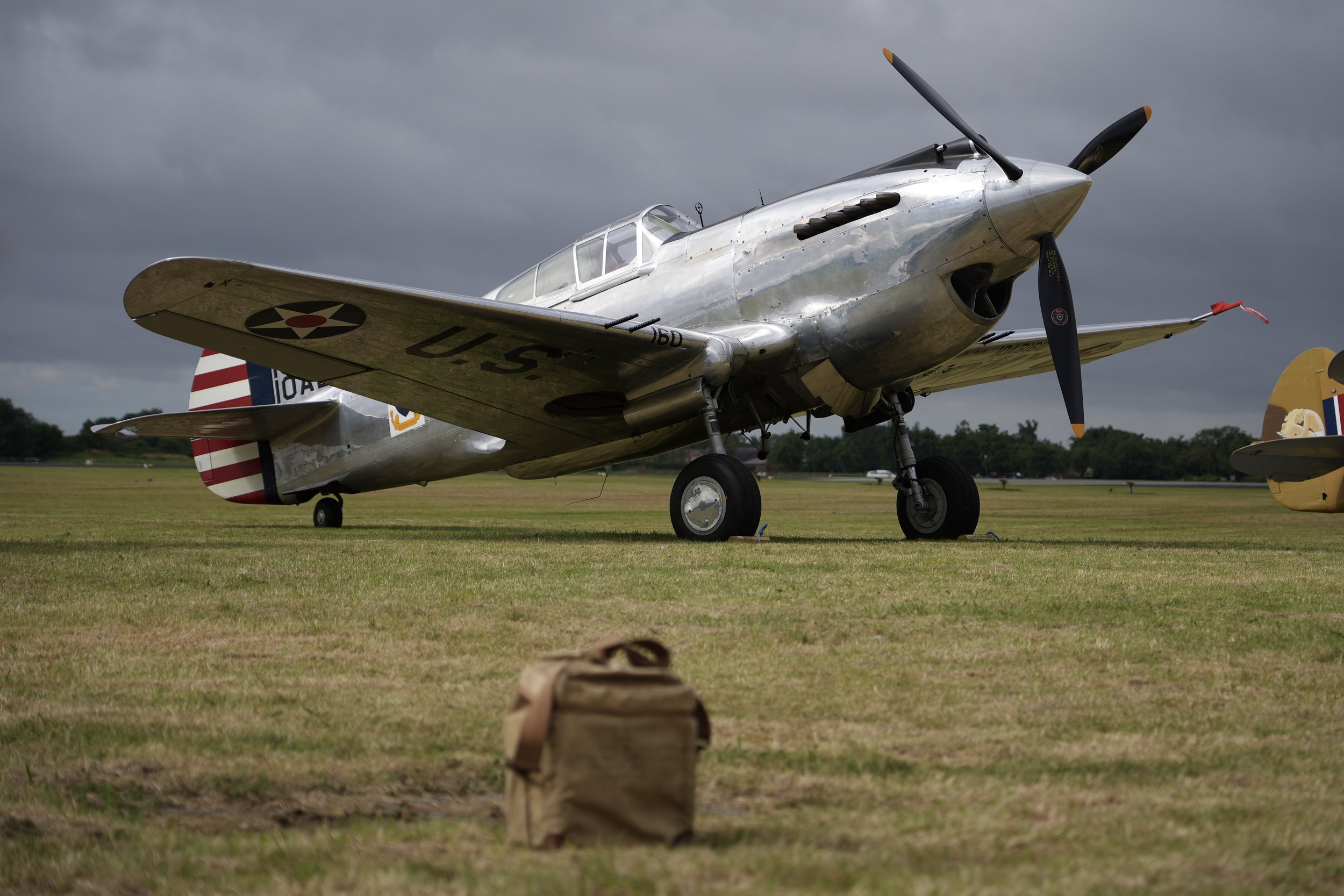Spitfire G-ASJV
Year built
1943
Aircraft
Spitfire LF.Mk.IX
Base
Duxford Airfield
MH434 was built in 1943 at Vickers, Castle Bromwich. This Spitfire is remarkably original, having never been subject to a re-build.
For its inaugural flight at the beginning of August 1943, MH434 was air tested by the legendary Alex Henshaw - a record-breaking pilot from pre-war days and Chief Test Pilot for Supermarine at Castle Bromwich.
Within the same month, MH434 was scoring with 222 Squadron. It was first allocated to South African pilot Flt Lt Henry Lardner-Burke, DFC (1916-1970, seven and a half kills, three damaged, retiring as a Wing Commander). On the 27 August in the St Omar area over France, Lardner-Burke, in ‘434, shot down a Focke-Wulf FW-190 and damaged a second during a mission to escort USAAF B-17 bombers. On 5 September 1943 they again shot down another FW-190 in the Nieuport area, and on 8 September 1943 claimed a half share in the downing of a Messerschmitt Bf-109G in Northern France.
In 1944 MH434 was transferred to 350 Sqn. Hornchurch, before being returned to 222 Sqn. Lardner Burke had by now been posted on, and the aircraft was next assigned to Flt Sgt Alfred ‘Bill’ Burge. He flew another 12 operational sorties in the aircraft before the Squadron’s existing Mk IXs were exchanged for a modified variant that could carry rockets. After over 80 operational sorties, MH434 was stood down in March 1945.
Post-war, however, MH434's guns were loaded again when bought by the Royal Netherlands Air Force in 1947. The Spitfire served with 322 Sqn. As H-105 - mainly ground strafing and light bombing missions - before crash-landing in Semarang, Java. After spending some time in storage, MH434 was repaired and flew again in Holland on 10 March 1953.
The Belgian Air Force became the next owner of this Spitfire, and as SM-41 she served at the Advanced Pilot School at Koksijde and with 13 Wing at Brustem.
On 26 March 1956 MH434 was put up for sale and bought and brought back to Britain by airline pilot Tim Davies. As G-ASJV the Spitfire was moved to Stansted then Elstree for a full overhaul. The aircraft was flown purely for pleasure and took part in it's first movie role, Operation Crossbow.
November 1967 saw MH434 join the motion picture airforce of Spitfire Productions Ltd. Set up by Group Captain Hamish Mahaddie for the film 'Battle of Britain'. At the end of the movie in 1968 MH434 was sold again. The new owner, Sir Adrian Swire, Chairman of Cathay Pacific Airways, had the Spitfire painted in 1944 camouflage colour scheme with his initials AC-S, as squadron codes. There were several film and television appearances during this period, including 'A Bridge Too Far.'
In April 1983 MH434 was sold at auction to it's most illustrious owner, Ray Hanna (Nalfire Aviation Ltd) and became one of OFMC's founding aircraft. The first major rebuild took place in the winter of 1994-95. MH434 has become a regular movie co-star and airshow performer and when not in make up for a role is flown in the authentic 222 Sqn. Codes ZD-B.
| Back to Top |
Supermarine Spitfire LF.Mk.IX
The Supermarine Spitfire is a British single-seat fighter aircraft that was used by the Royal Air Force and other Allied countries before, during, and after World War II. Many variants of the Spitfire were built, using several wing configurations, and it was produced in greater numbers than any other British aircraft. It was also the only British fighter produced continuously throughout the war. The Spitfire continues to be popular among enthusiasts; nearly 60 remain airworthy, and many more are static exhibits in aviation museums throughout the world.
The Spitfire was designed as a short-range, high-performance interceptor aircraft by R. J. Mitchell, chief designer at Supermarine Aviation Works, which operated as a subsidiary of Vickers-Armstrong from 1928. Mitchell pushed the Spitfire's distinctive elliptical wing with cutting-edge sunken rivets (designed by Beverley Shenstone) to have the thinnest possible cross-section, helping give the aircraft a higher top speed than several contemporary fighters, including the Hawker Hurricane. Mitchell continued to refine the design until his death in 1937, whereupon his colleague Joseph Smith took over as chief designer, overseeing the Spitfire's development throughout its multitude of variants.
During the Battle of Britain, from July to October 1940, the public perceived the Spitfire to be the main RAF fighter, though the more numerous Hurricane shouldered a greater proportion of the burden against Nazi Germany's air force, the Luftwaffe. However, Spitfire units had a lower attrition rate and a higher victory-to-loss ratio than those flying Hurricanes because of Spitfire's higher performance. During the battle, Spitfires were generally tasked with engaging Luftwaffe fighters—mainly Messerschmitt Bf 109E-series aircraft, which were a close match for them.
After the Battle of Britain, the Spitfire superseded the Hurricane to become the backbone of RAF Fighter Command, and saw action in the European, Mediterranean, Pacific, and South-East Asian theatres. Much loved by its pilots, the Spitfire served in several roles, including interceptor, photo-reconnaissance, fighter-bomber, and trainer, and it continued to serve in these roles until the 1950s. The Seafire was a carrier-based adaptation of the Spitfire that served in the Fleet Air Arm from 1942 through to the mid-1950s. Although the original airframe was designed to be powered by a Rolls-Royce Merlin engine producing 1,030 hp (768 kW), it was strong enough and adaptable enough to use increasingly powerful Merlins and, in later marks, Rolls-Royce Griffon engines producing up to 2,340 hp (1,745 kW). As a result, the Spitfire's performance and capabilities improved over the course of its service life.
The Spitfire MkV was one of the most successful ‘stop-gaps’ ever introduced into Royal Air Force Service. Over one hundred and forty RAF squadrons operated the type. It served on all battlefronts and was supplied to nine other countries including the Soviet Union and the United States.
During 1940 the Spitfire MkI and MkII barely maintained superiority over the Messerschmitt Bf109E so the Air Staff turned their attention to the question of a replacement. Their preferred successor was the MkIII, fitted with a Merlin XX engine and incorporating a new wing design.
Realising it would take time to tool up for a new production aircraft and because of problems with the Merlin XX, the Air Ministry asked Rolls-Royce, as an interim measure, to install the Merlin 45 engine in the Spitfire MkI airframe. Between 1941 and 1943 over 6500 of this MkV version were produced. The spitfire MkIII never did go into production but some of the new design features intended for it were incorporated into the MkV
By 1944 only five squadrons remained in service. Even so, two Spitfire MkV squadrons provided gunfire direction on 6 June 1944 for naval units off the D-Day beached of Normandy.
| Back to Top |




| Back to Top |

































